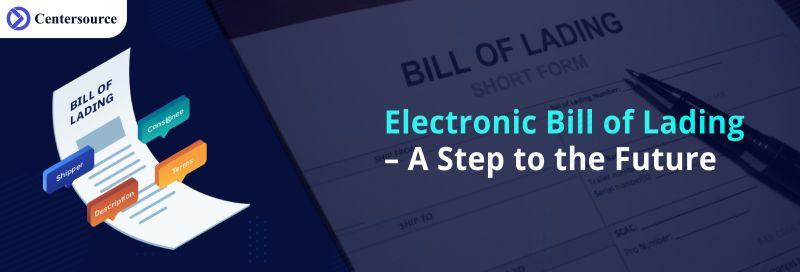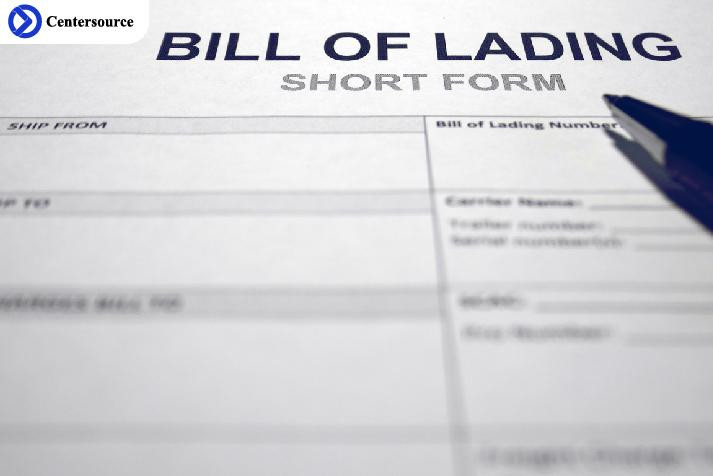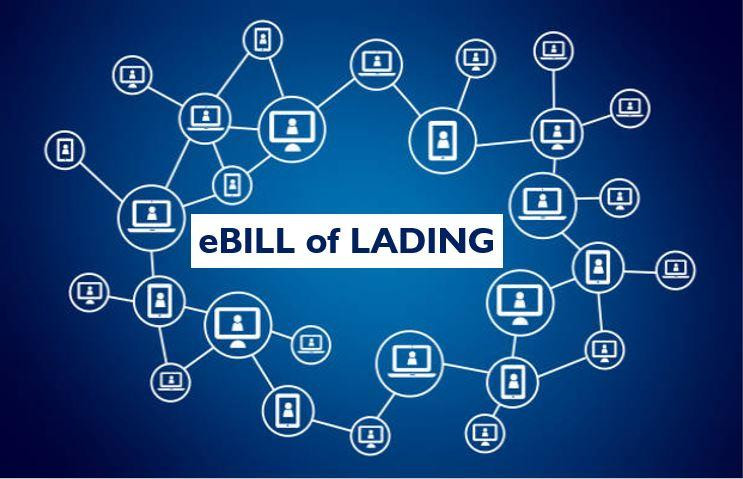The traditional paper-based Bill of Lading has now, due to the advancements of technology, taken a new shape in the form of an Electronic Bill of Lading or eB/L. To those involved in international trade & shipment, this can be beneficial to their supply chain. Through this piece, let’s look at how the eB/L can provide value to the exporters and make their supply chain more efficient.
The Definition of a Bill of Lading
A Bill of Lading can be defined as a document issued by the Carrier of Goods to the Shipper to act as evidence or proof of the shipment. As a critical part of international trade, the B/L shows who legally owns the cargo at any point of the supply chain. The holder of the B/L or owner of the cargo has all the legal rights to claim the goods and arrange the transfer of ownership.
The Electronic Bill of Lading is a digital version of the B/L. It performs the same functions as the Bill of Lading and yet improves the accuracy, security, and speed of the information. The best part of opting for an eB/L is that the transfer of ownership happens almost instantaneously.
How does an eB/L Improve the Export/Import Process?
With the announcement of the Electronic Trade Documents Bill in the Queen’s Speech by His Royal Highness the Prince of Wales & The Prime Minister of the UK, very soon the legal barriers to digitising commercial trade documents will be dismissed in the English Law, and there is hope to strive in a paperless world. The legal standing of the Electronic Bill of Lading will no longer be questioned, and exporters can use the same for their feasibility.
The traditional paper-based Bill of Lading is manual & slow, making it difficult to share in the supply chain. However, upgrading to the eB/L will bring several benefits to all the parties involved in the transaction. As per research by the Digital Container Shipping Association, the global container shipping industry can save around $4 Billion each year if even half of all B/L were in a digital format. This is because the Bill of Lading is an integral part of every shipment and thus affects the individual workflows and processes of several parties involved. Once digital, the shippers can provide data & information to the carriers for creating the eB/L that is shared with the consignees, freight forwarding companies, and banks, amongst other parties.
Core Benefits of Opting for an Electronic Bill of Lading
- Paperless: A Bill of Lading, in its electronic form, will provide all parties in the supply chain with a paperless process. A B/L consists of information used to transfer the ownership of goods or data from one party to another. The entire supply chain relies on that single piece of paper, and even the slightest delay can be costly. With an eB/L in the equation, when data is digitally entered, and electronic signatures or stamps are used, the transfer is done instantly. This also eliminates human error and reduces administration time & associated costs.
- Instant Exchange of Information: When it comes to the amendment of information, a paper-based B/L follows a long process as it requires someone to manually change the information & then resend it to another party after confirmation. If the amendments are made when the shipments are close to the port, it can lead to demurrage charges & delays. An eB/L ensures every change is updated, approved, and communicated within a few seconds, avoiding unnecessary delays or extra charges in the supply chain. The ease of information sharing can also save a lot of time & money otherwise incurred in postage costs.
- Accessibility & Data Accuracy: By upgrading to an Electronic Bill of Lading, parties across the supply chain can access the data & documents easily via a web browser on their laptops or desktops at any point in time. Every time a piece of data is deleted, changed or entered in the B/L, there is a risk of human error or continuation. With an eB/L, this error is eliminated, as the new data is updated immediately, thereby maintaining data accuracy.
- Security of Data: Supply chains rely heavily on the validity & accuracy of the information contained in the B/L to fulfil the consignment. However, a traditional paper-based one is open to a broad range of fraud as there is a scope for manipulation or editing in the sharing process. eB/Ls, on the other hand, provide a higher security level which can confirm the date and time of the parties responsible for editing a particular section.
The Electronic Bill of Lading process is not just beneficial for counterparties globally but is also highly efficient & cost-effective for the shipping industry. Timber Exchange is a supply chain automation platform developed by Centersource Technologies that aims to digitise global trade, especially in the timber industry. The platform provides four features - 100+ advanced supply chain tools, an open B2B marketplace, an updated global market data hub, and trade finance & compliance services.
Each of these features brings a high-trust trade network of leading & vetted companies across the world in one platform that eliminates middlemen, saves a lot of time, and provides effective multilingual communication. Timber Exchange also provides the scope for editing and managing digital documents, smart contracts, the eB/L, and even a packing list for all the parties on the platform. If you are interested and wish to know more about Timber Exchange, check out https://www.timber.exchange/.




